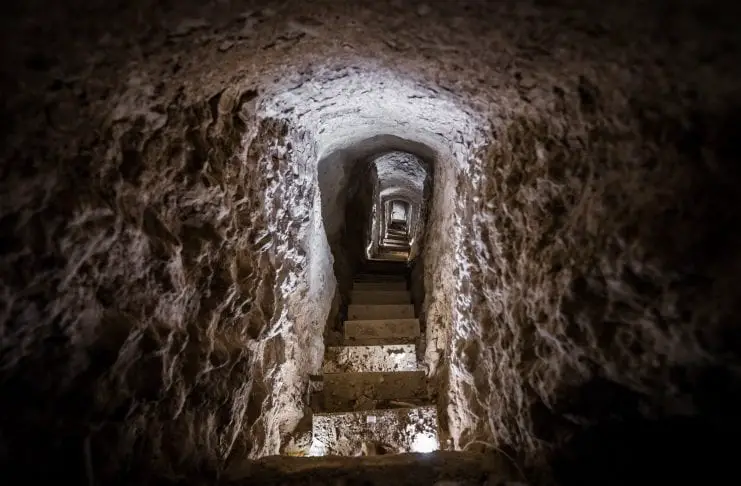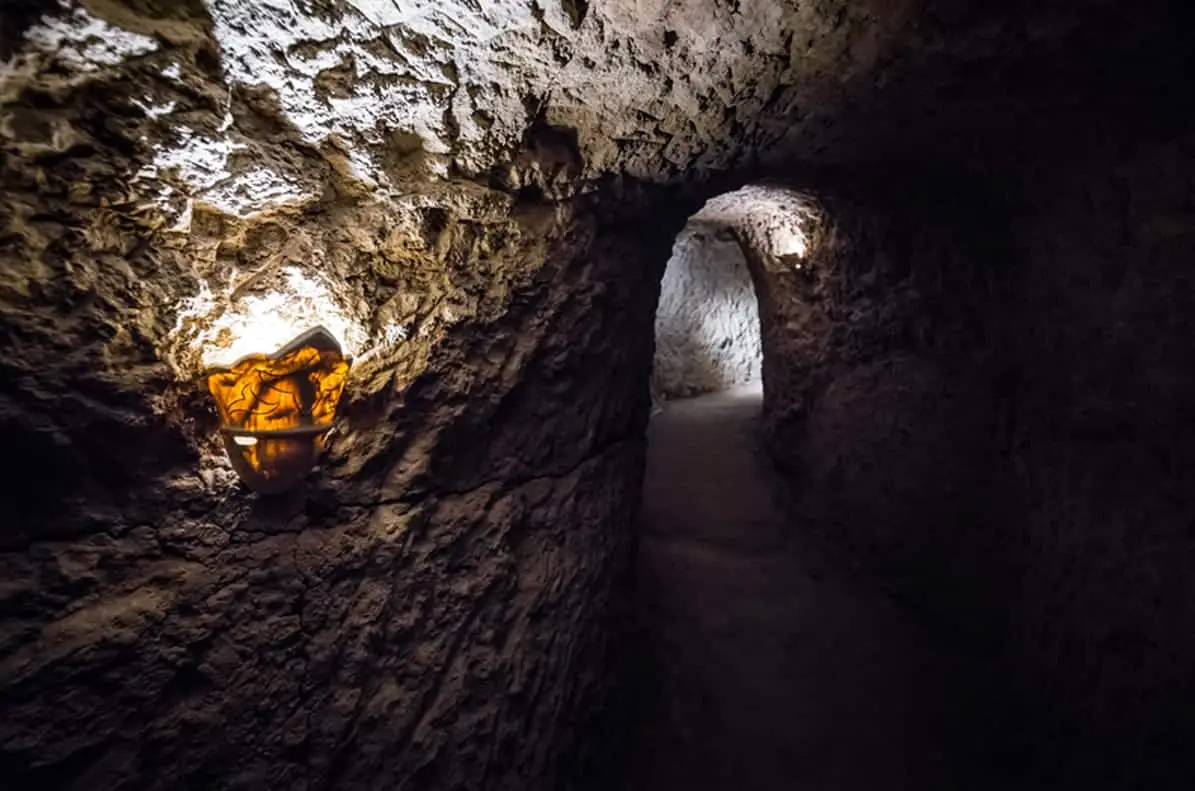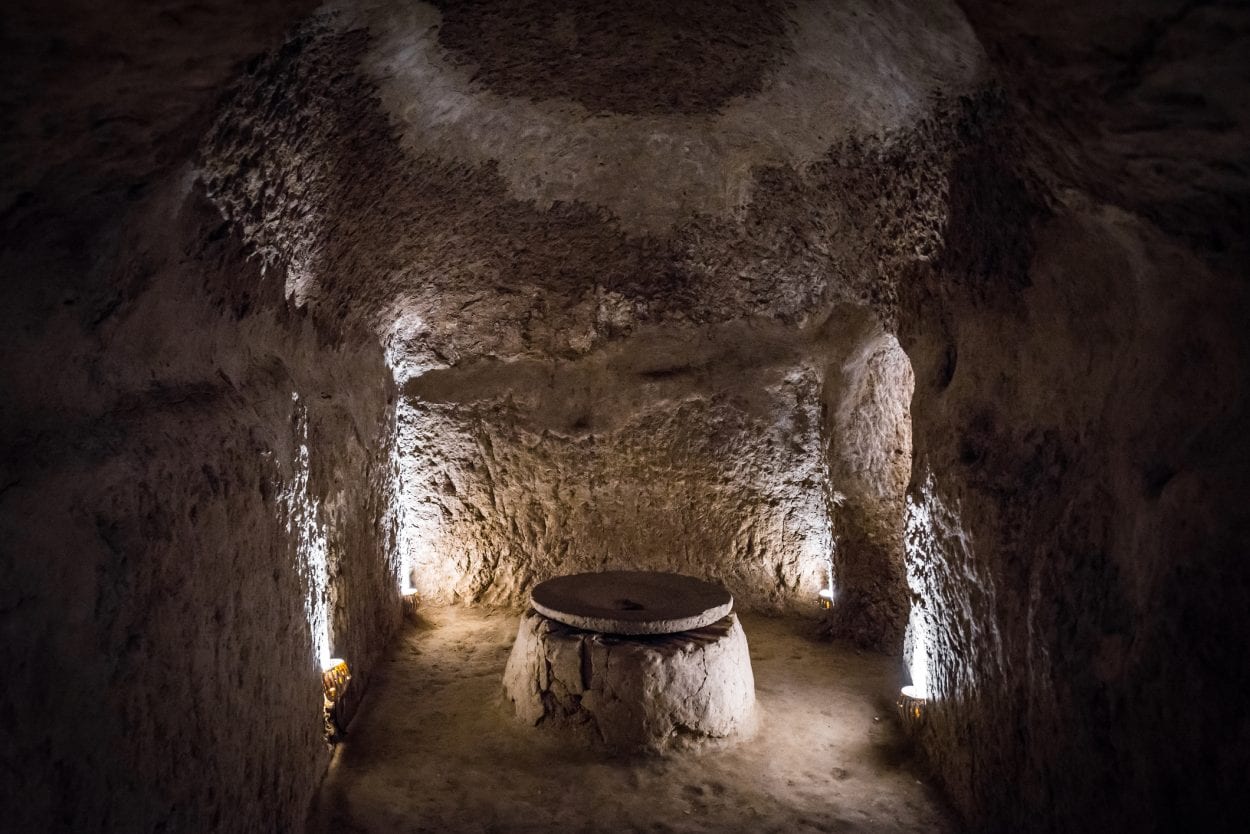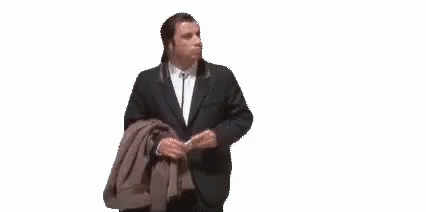Anthropology
Related: About this forumNoushabad - The Hidden Underground City

Image Credit : Dreamstime License
SHARE
Noushabed, also called Oeei or Ouyim is an ancient subterranean city, built beneath the small town of Nushabad in present-day Iran. The earliest parts of the city were constructed sometime during the Sassanid period between AD 224 to 651 and continued to be excavated during the post-Islamic era, with evidence of occupation lasting until the Qajar dynasty.
Archaeologists have discovered human remains, earthen vessels, and stone instruments from the Sassanian, Ilkhanid, and Safavid periods, suggesting almost continuous use for many centuries.

Researchers have identified three distinct levels reaching a depth of 16 metres, and a complex network of interconnected tunnels and chambers covering an area of 3.7 acres. The different levels were connected through vertical and horizontal channels that also functioned as a ventilation system allowing the free flow of air throughout the substructure.

Image Credit : Dreamstime License
The city was accessed via short wells or narrow corridors, hidden in houses (some hidden behind ovens), a mosque, the Sizan castle, water channels and qanats, or in obscured locations outside the original town boundary. The city was so well hidden, that Noushabad was only rediscovered when a town resident stumbled across the tunnels whilst digging a sewage ditch on their property.
Archaeologists suggest that the city served as a concealed refuge against invaders, with portals blocked using large millstones to prevent access. The tunnel network also rises and falls across multiple levels leading to various dead ends, creating a complex labyrinth designed to confuse intruders.
More:
https://www.heritagedaily.com/2021/03/noushabad-the-hidden-underground-city/137483

Faux pas
(14,703 posts)Very cool 😎.
mainer
(12,037 posts)A fascinating place, but not for claustrophobics.
erronis
(15,428 posts)He's written several pieces and books about subterranean living (and dying). And many superb books on traveling above ground.
https://en.wikipedia.org/wiki/Robert_Macfarlane_(writer)
Judi Lynn
(160,656 posts)What Lies Beneath
Burrow far below the planet’s surface, and even there, humanity has left its imprint.
By Rebecca Giggs
JULY 2019 ISSUE
SHARE
Review:
https://www.theatlantic.chttp://www.democraticunderground.com/?com=forum&id=1014om/magazine/archive/2019/07/robert-macfarlane-underland/590632/
I felt anxious just reading the review! Wow.
Thanks for the information, erronis. ![]()
~ ~ ~
From NPR:
'Underland' Connects Us To Dazzling Worlds Beneath Our Feet
June 3, 20199:52 AM ET
BARBARA J. KING
Underland
A Deep Time Journey
by Robert Macfarlane
Off the western coast of Norway are sea caves graced by stick figures painted more than 2,000 years ago. Colored red from the iron-oxide pigment used by Bronze Age artists, the figures appear to be in motion, with arms and legs splayed.
Among his travels in Underland: A Deep Time Journey, British nature writer Robert Macfarlane journeys to the remote cave called Kollhellaren on the tip of the island Moskenes to see its dancing figures. To arrive there, Macfarlane crosses a ridge of peaks called the Lofoten Wall, pulls himself out of a snow crevasse into which he had partway plunged, crosses a boulder field through hail and sleet, and eventually enters "the black vault of a cave." Once inside, his eyes seek treasure. "There, there, yes, is a red dancer, scarcely visible but unmistakable ... a dozen or more of them, spectral still but present now, leaping and dancing on the rock ..." Feeling the past artistry telescope into the present moment, Macfarlane cries as he stands "deep in granite and darkness."
In his latest book, Macfarlane explores subterranean spaces with the yearning of a man who feels awe. Descending below the Earth's surface, he says, brings us into the realm of deep time, a chronology "kept by stone, ice, stalactites, seabed sediments and the drift of tectonic plates." In this way, the underland is connected to mystery. Too often that mystery is linked culturally to fear, to entrapment, to death and burial. It is this dark mythology (think Orpheus descending into Hades) that Macfarlane seeks to complicate as he searches for light and knowledge beneath the Earth.
Hardly pristine or unpopulated, the underland is shot through with humans and human endeavors. On the English coast near the town of Boulby, Macfarlane descends a half mile down to meet a physicist holed up in a rock-salt cave who seeks evidence of dark matter. Because salt is dynamic — it actually flows and creeps over time — axes are embedded in the wall in case of sudden collapse. The lab is located right at the site of Boulby's potash mine, which boasts an astonishing 600 miles of underground tunnels and roadways. Macfarlane, of course, wants to explore them. Perched in a doorless van piloted by a mine-safety specialist called Neil who drives it at speed, they rocket through salt in some areas and potash in others. At one point, Macfarlane notices a stream of water running down a tunnel wall. Neil explains they're no longer rushing along underground: They are now driving under the sea. On they career for another 20 minutes; in one of the book's most captivating passages, Neil delights in imagining the ship captains riding the waves above them.
More:
https://www.npr.org/2019/06/03/729156788/underland-connects-us-to-dazzling-worlds-beneath-our-feet
Anyone tilting slightly toward claustrophobia might have a hard time reading it straight through! Holy moly.
erronis
(15,428 posts)So much of what I read is rather factual (vs. fictional) and I find I need to read a few pages and then move onto something else. This has always been my style to switch between tasks and chores and pleasures.
Since we're in a bookish mode and within anthropology: Have you read Bill Bryson's "The Body"? It is an amazingly in-depth account of how we're put together (somewhat haphazardly) and how we've attempted to fix our various ailment.